Potato ricers are so appealing because they produce fluffy strands of potatoes and require minimal mixing for mashed potatoes.
But what if your recipe calls for one and you don’t have one on hand?
After 15 years working in professional kitchens, I’ve come across this dilemma on many occasions. In this article, I’ll share a few great tools that can stand in for a potato ricer.
One knock against a potato ricer is that it is largely a single-use device. Regardless of whether you don’t have one on hand or simply want to eliminate under-utilized appliances in your kitchen, I’ve got a solution for you.
In This Article
5 Potato Ricer Alternatives
Food Mill
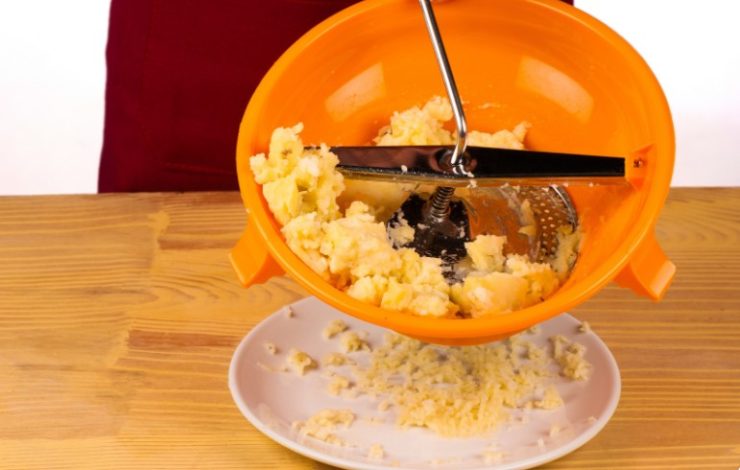
I’d consider a food mill to be the best way to replicate light potato strands like a ricer.
Of course, a food mill is a much more versatile tool. You can use it to strain and puree tomatoes, crush and grind crackers. When the crank is removed it’s also large enough to function as a colander. Because of the sieve-like structure of its perforated disk, it can process food like tomatoes, and keep most of the seeds out of the mixing bowl.
If you plan to make gnocchi, I’ve found that a food mill is the best substitute because of how it produces similar potato strands.
To use a food mill to rice potatoes, depending on the size of your food mill, I would recommend only milling one or two cooked potatoes at the time.
Place the potatoes into the food mill basket, and start cranking! Strands will protrude from the bottom of the food mill. Scrap any stuck potatoes from the bottom with a spatula.
It is helpful to wipe or rinse inside the bowl between batches to remove any potatoes that could be clogging any holes or perforations.

Pro-tip: Rinse your food mill after using it to rice potatoes to remove starch. If it’s allowed to dry, it makes cleaning a little tougher.
Grater
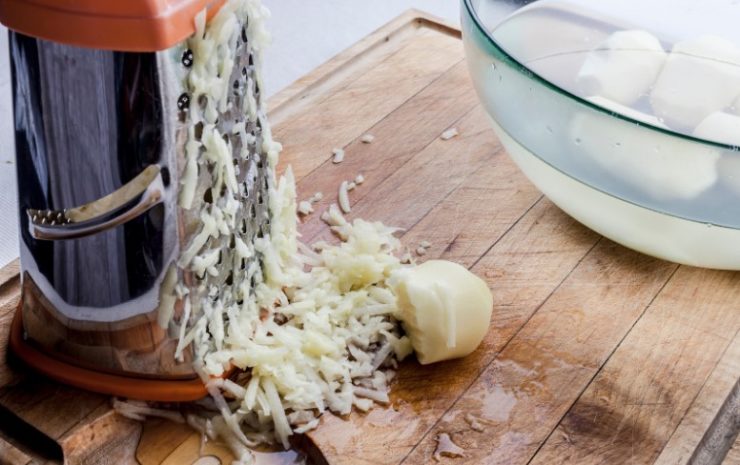
A grater is a suitable substitute if you’re ricing small portions.
If you’re only making 1-2 servings of mashed potatoes or gnocchi, a grater should easily get you by. But beware, this method only allows you to process one potato at a time!
Using a grater for larger portions can be time-consuming. Consider the size of your dish before you start grating. It can get pretty tiresome quickly!
I’ve had to make small batches of mashed potatoes for wedding tastings at my restaurant. Using a grater was key to making only a couple of plates of fluffy mashed potatoes.
A standard cheese grater should have well-sized holes for this purpose. I like to grate into a large mixing bowl to reduce the mess and keep everything contained.
Press and push a cooked potato against the grater to produce strands. Because you’ll be holding the potato, consider using gloves, or allowing the potatoes to cool a bit before you start grating them.

Pro-tip: Repeatedly gripping food can be laborious, and can really wear on your joints. Take frequent breaks if you can, and stretch your hands, fingers, and wrists!
Potato Masher
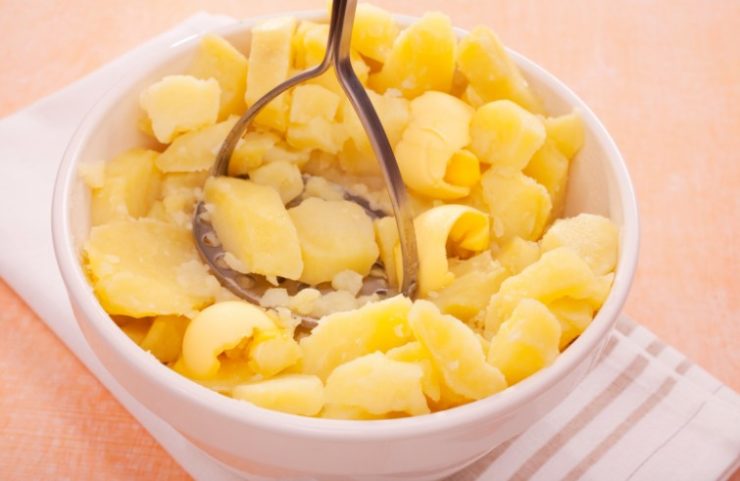
When making a large batch of mashed potatoes, I like using a potato masher.
It can leave the potatoes a bit chunky, but it’s a preference I hold onto because that’s how grandma used to make them.
These handheld crushing tools come in nylon, plastic, or stainless steel varieties. All are quite affordable. For durability and strength, I recommend using stainless steel construction.
Place cooked potatoes into a mixing bowl or pot, and start pushing down on them with the masher.
If you don’t like potato peels in your mashed potatoes, peel them first. Unlike a ricer, food mill, or grater, potato peels are less easily filtered, so keep that in mind.
Any time you’re mashing potatoes, try not to overmix. Overmixing releases too much starch in the potatoes, making them sticky and gluey.
If you’re making mashed red potatoes, a potato masher is the way to go. Red potatoes are more waxy than Yukon golds and russets. A masher does a great job of preparing them without overmixing.
For gnocchi, I would recommend using a food mill or grater instead. Since using a masher tends to leave some chunks, its texture makes it less than ideal for gnocchi.
Fork
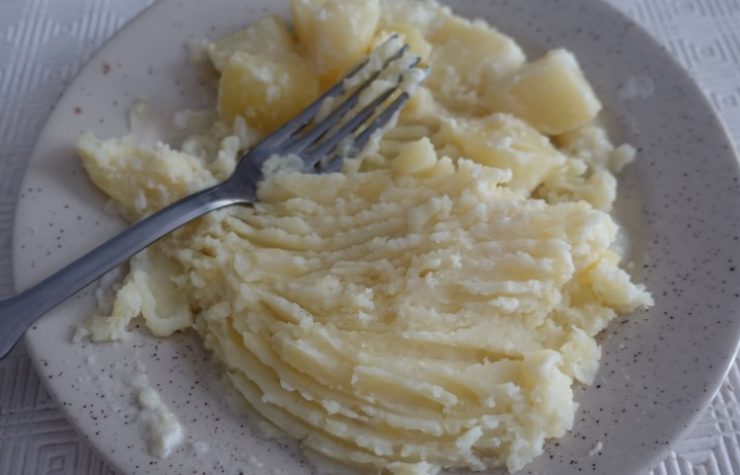
A fork is a fine tool for making very small batches of gnocchi or mashed potatoes! And you probably already have a drawer-full.
Ideally, you only want to use a fork for a few potatoes. One is no big deal, but once you have more than a few potatoes to mash with a fork, it gets quite tedious.
If you’re mashing with a fork, press its broadside down into a fully cooked and peeled potato. Once you’ve mashed a bit, you can begin stirring gently to mix things up.
If a fork is your only option, practice patience when you have a large batch!
Food Processor
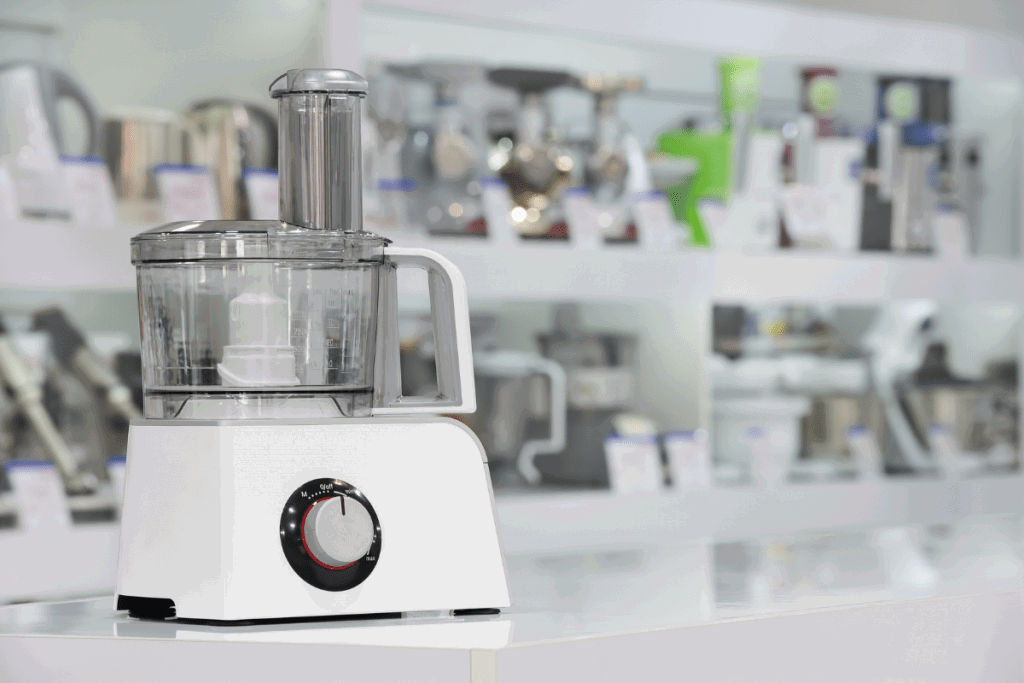
I’d never used a food processor to mash potatoes in a professional setting. But if you’re at home and have a need for speed, this is an option worth considering.
The primary challenge is that, with a food processor, it’s exceedingly easy to overmix your potatoes. I worked for a few chefs that would give me their best Gordon Ramsay, if I even attempted to do this.
Over-mixed potatoes can end up sticky, gluey and kind of yuck.
I recommend only mixing one to three potatoes at a time. This reduces the chances of overmixing. Remove the processed potatoes and put them into a mixing bowl or pot.
Only use the pulse button when processing the potatoes. Use a spatula to scrape the sides of the processor to ensure any remaining chunks get shredded.
In my view, a food processor is better used to shred vegetables, puree sauces, and ground meats. It can be a fine substitute for a ricer if you are crunched with time. Still, for potatoes, I would recommend using a food mill, masher, grater, or even a fork before a food processor.
Do I Actually Need A Potato Ricer?
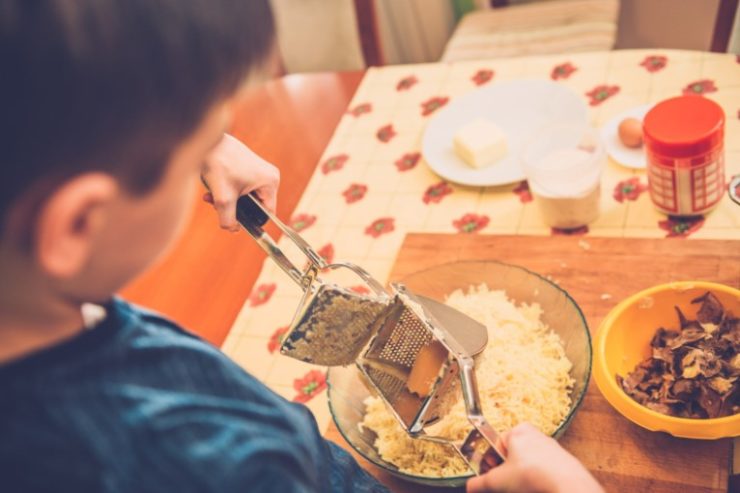
I’ve worked for chefs strictly against single-use devices, and I’ve worked for chefs who swore that having a potato ricer was an important part of any proper kitchen.
I believe that potato ricers are the best tool for fluffy mashed potatoes, and making large batches of gnocchi.
If you make a lot of gnocchi, a potato ricer is a worthy investment. It is hard to achieve the light, fluffy texture of gnocchi without one. A food mill comes pretty close.
For mashed potatoes, a food mill or a grater can make for fluffy and airy potatoes. A food mill or a grater can make for fluffy and airy potatoes for mashed potatoes. Personally, I like the rustic nature of chunky potatoes.
Consider the reasons you might want one, and how often you might use it.
One Final Tip
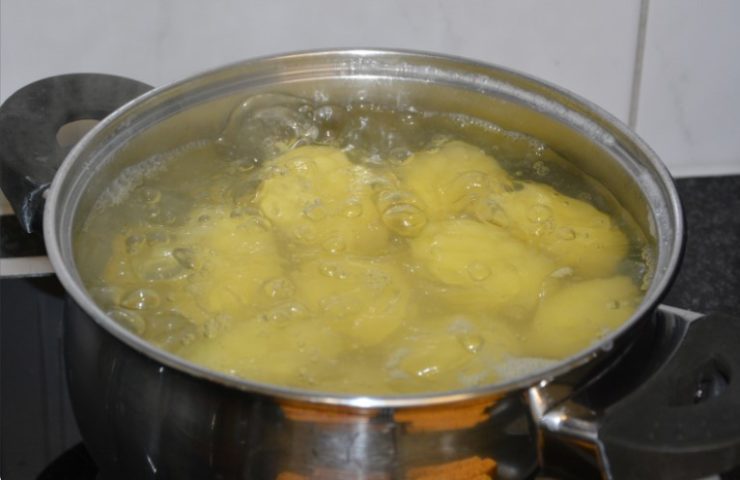
Always fully cook your potatoes.
Regardless of how you rice or mash your potatoes, this will help you achieve excellent fluffiness.
Boiling or steaming potatoes until they are tender enough for a fork to easily go through them is ideal. I’ve had good luck baking potatoes ahead of time, too!

Pro-tip: If you wait until after you fully cook potatoes to peel them, save the peels to fry some potato skins! Since they’re pre-cooked, they cook quickly and easily. Leave some potato on the skin for a little more substance.
Frequently Asked Questions
What can I use if I don’t have a potato ricer?
If you don’t have a potato ricer, a food mill best replicates the fluffy strands of potato you can get from a ricer. A masher, mixer, or food processor can also work, but avoid overmixing.
Can you use any potatoes for gnocchi?
Starchy, low-moisture potatoes like Yukon golds or russets are ideal for gnocchi. Avoid waxy potatoes, like red potatoes, that are higher in moisture content and lower in starch.
Can you use a food processor as a potato ricer?
A food processor can stand in for a ricer, but avoid over mixing. Overmixing makes the potatoes gluey.







